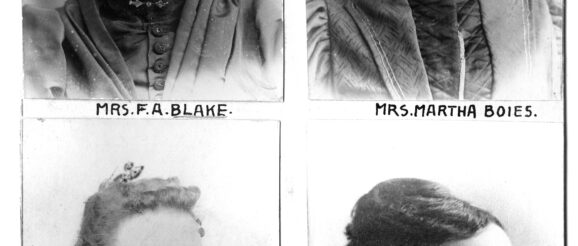“So Great an Innovation”: Women Suffrage in Wyoming — South Dakota Historical Society Press

On 10 December 1869, John Allen Campbell, the Republican governor of Wyoming Territory, signed the bill that made Wyoming the first government in the history of the United States to grant full voting rights to its women citizens. Introduced by Democrat William Bright and passed by Wyoming’s all-Democratic legislature, the law was a critical step on the road to the Nineteenth Amendment. How did this radical expansion of democracy come to the windswept western plains? Wyoming’s enfranchisement of women was the product of Reconstruction, the period after the Civil War in which the federal government sought to rebuild society, politics, and industry. As Congress debated how to extend voting and civil rights to the freedmen, advocates such as Susan B. Anthony, Elizabeth Cady Stanton, and Lucy Stone argued that these rights should also be extended to women. Efforts to enfranchise women failed in most of the country, but the story played out differently in Wyoming.
Federally-appointed Republican politicians, all veterans of the Union Army, ran Wyoming Territory. These men supported and had fought for the expansion of rights outlined in the Fourteenth Amendment, which granted citizenship to any person born in the United States. Some, such as Territorial Secretary Edward Merwin Lee and Associate Justice John Kingman, went further—they supported suffrage for women as well. They also ensured that the territory enforced the Fifteenth Amendment, which prohibited discrimination in voting on the basis of race.
Wyoming’s Democrats, by contrast, opposed expanding voting rights to African American men. In 1868, violence broke out at the polls when black men exercised their franchise. South Pass Democrat William Bright was among those who opposed black voting. Yet, Bright proposed the woman suffrage bill and guided it through the legislature. Bright genuinely believed that women deserved the right to vote, but he also sought to expand the white electorate of the territory. Given that much of Wyoming Territory consisted of land guaranteed by treaty to American Indians, both Democrats and Republicans believed that securing white control of the territory was imperative.
Though there was no organized suffrage movement in Wyoming, women’s advocacy was critical. Women’s rights lecturers Anna Dickinson and Redelia Bates spoke on suffrage in Cheyenne in the fall of 1869. William Bright’s wife, Julia, lobbied her husband for suffrage, as did the wives of other legislators. The political activism of Wyoming women significantly impacted the development of the territory. Esther Hobart Morris, who came from a family with strong connections to the suffrage movement, became the first female justice of the peace in the United States, and began hearing cases in South Pass City in February 1870. Cheyenne suffragist Amalia Post served on a jury and was also active on the Laramie County Republican Central Committee, which nominated two women for office in the September 1870 elections. Post also lobbied Governor Campbell when Democrats unsuccessfully attempted to repeal suffrage in 1871.
By the time Wyoming became a state in 1890, dozens of women had run for office, and many had served, particularly in offices related to public education. Wyoming women also supported suffrage activists in neighboring Northern Great Plains states as well as in the national movement. Perhaps most importantly, Wyoming’s example provided an inspiration to suffragists across the nation for decades to come.
Jennifer Helton
The full version of this essay appears in . Jennifer Helton is assistant professor of history at Ohlone College in Fremont, California. A native of Wyoming, Helton holds undergraduate and master’s degrees from Stanford University.
Suffrage created new paths into public life for many Wyoming women, as illustrated in the image at top. Martha Boies became Laramie’s first woman bailiff in 1870; Sarah Pease served as a juror; Eliza Boyd ran for office in Albany County; and Mrs. F. A. Blake helped found Laramie’s Presbyterian church. Wyoming State Archives Photo Collection
